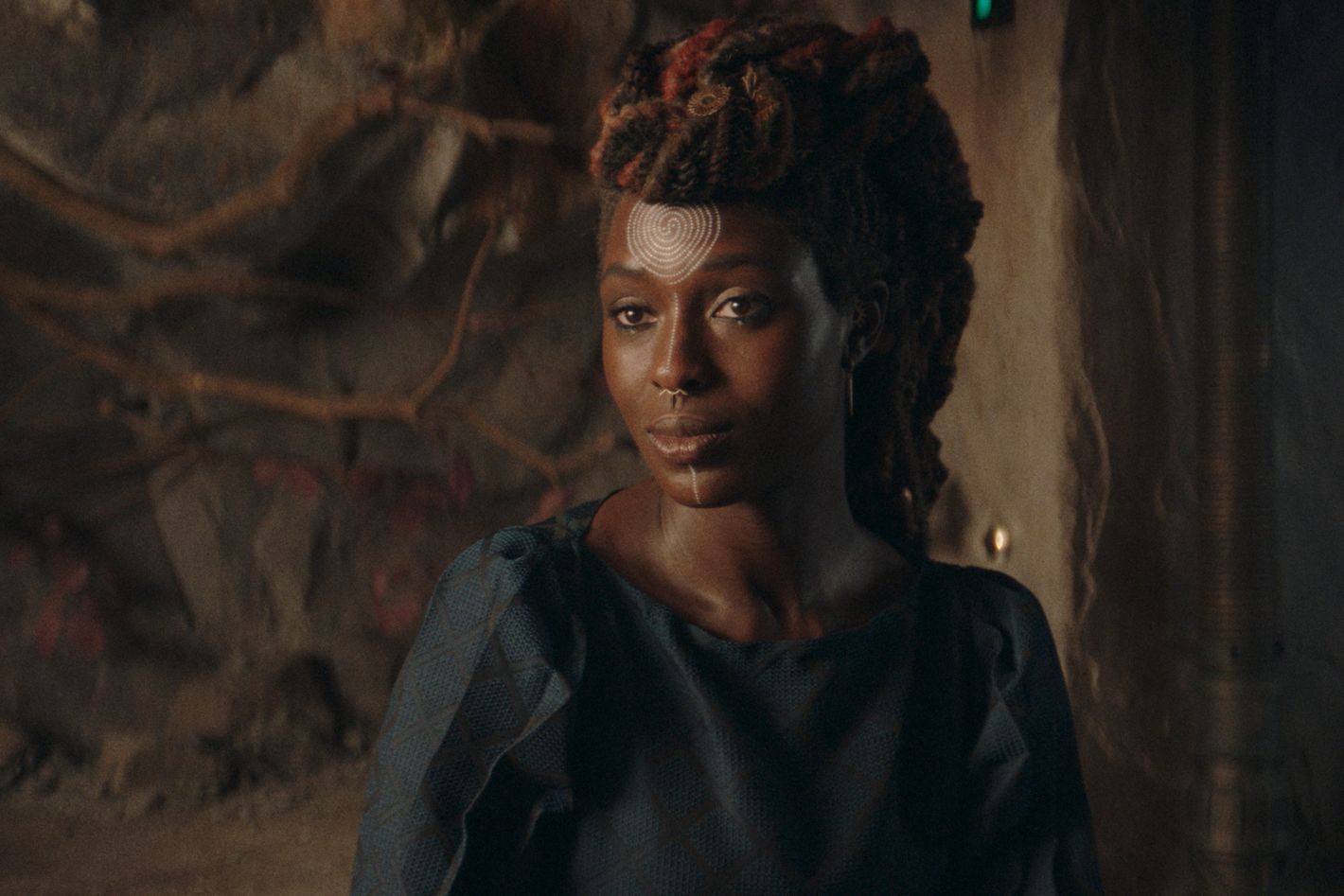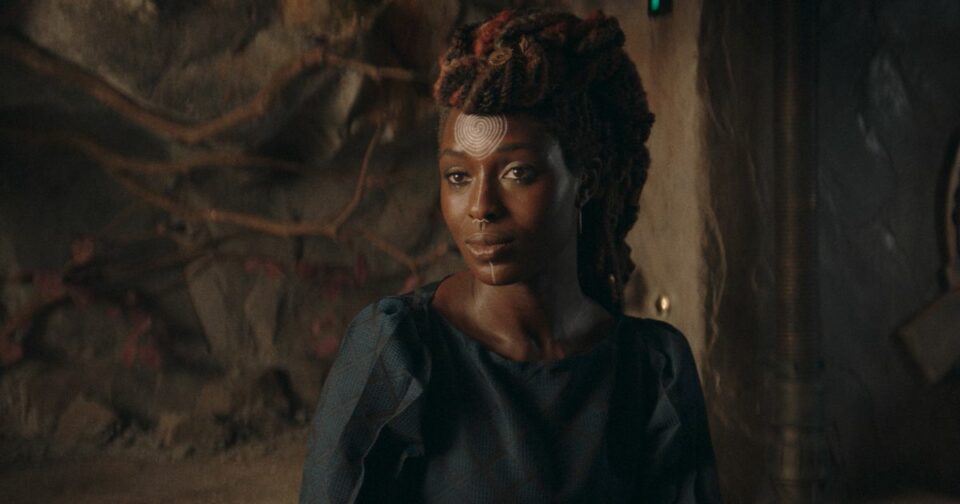
Hey, remember midi-chlorians?
Way back in 1999, in Star Wars: Episode I — The Phantom Menace, writer-director George Lucas — via his character of Qui-Gon, a Jedi Master — introduced the idea that “the Force” can be unusually strong within individuals who have a larger than normal amount of special microscopic creatures in their body’s cells. Ever since, many Star Wars fans have been bothered by this addition to the lore, complaining that this new explanation for the Force turned a power they’d long thought of as profoundly mystical — and attainable by anyone, with the proper training — into something limited to folks with the “right” genes.
Other Star Wars fans will counter that midi-chlorians are just one way someone can be strong in the Force. But that’s irrelevant to the point I want to make about all this, which is … What if Qui-Gon was wrong? What if the Jedi’s whole understanding of the Force in the prequel trilogy is misguided, going hand in hand with their ultimately foolhardy obsession with science and order in those films?
Following that same logic, let’s jump back to 100 years earlier. (In Star Wars time, that is; in our time it’s 25 years later.) In this week’s episode of The Acolyte, titled “Destiny,” we get an extended flashback to the childhood of Osha and Mae (played as children by Leah and Lauren Brady), just before they were separated by tragedy. On the planet Brendok, these two lived a life of exploration and harmony with nature, under the eye of a coven of Witches — led by Aniseya (Jodie Turner-Smith), the one said to have “created” them, and Koril (Margarita Levieva), the one who “carried” them. At one point in this episode, Aniseya explains the Force to her two children as a kind of cosmic Thread that can be tugged on by anyone who knows how. Two people tugging is better than one. More is better still.
Once again, there has been grumbling in some corners of Star Wars fandom about this reinterpretation of the Force as an act of collective will, rather than as something an individual can master and wield. And to these folks I would say: What if the Witches are wrong? What if no one in the Star Wars universe has a true understanding of the Force?
“Destiny” doesn’t resolve the question of what the Force actually is. Instead, it’s about two groups of zealots fighting over the future of two potential … well, acolytes. The Jedi have sensed that Osha and Mae are remarkably Force-sensitive, and because the Order has concerns about any Witches — a barely tolerated sect with distant Jedi origins — they want to test these kids. If the sisters pass, the Jedi want to whisk them away to Coruscant and feed them into their Jedi brainwash mill.
Or at least that’s the way Aniseya and Koril and their fellow Witches frame all this for Osha and Mae. In fact, the Witches urge the younglings to lie to the Jedi and intentionally fail their test, so they can stay on Brendok forever and add their power to the coven.
But what do Osha and Mae want? Again, there’s a split. Mae, the star pupil who seems to get “the Thread” on a deeper level than Osha, is all-in for the upcoming Ascension ceremony, where she and her sister will join the coven. But Osha doesn’t want to be tied down to a life she never chose for herself. She aces the Jedi test and announces her plan to go to Coruscant, knowing she may never see her family again. Mae responds by burning one of Osha’s notebooks, which triggers a larger fire that consumes the coven’s fortress, killing nearly everyone. (That’s what we see, anyway. Given that Mae has been on a mission of revenge against the Jedi ever since, I suspect there’s more to this story.)
The Acolyte creator Leslye Headland comes from the world of American independent film, where screenwriters have a bad habit of teasing out their characters’ backstories for as long as possible, hinting at dark, life-changing secrets while holding back the details until the third act. So I appreciate that she and her writers (Jasmyne Flournoy and Eileen Shim in this case) don’t make us keep waiting to find out what happened 16 years ago that divided Osha and Mae.
Origin stories like these can be tough to pull off, though, especially when they involve mystical mojo and children (and, by extension, child actors, who often struggle with gravitas). Ask Lost fans sometime what they think of “Across the Sea,” the season-six “secret of the Island” episode that rooted the whole dang series in a pair of squabbling brothers and some kind of powerful glowing cave. Some do love it — myself included. But its stiffness and inherent corniness left other fans with a sinking feeling about Lost’s ability to pull off a satisfying ending.
I can’t deny that there’s a similar air of clunk and grate to “Destiny,” which features a lot of scenes of the sisters being lectured to by their ideologically rigid Witch moms — and a lot of scenes of the sisters yelling at each other. There are too many moments in this episode that are a chore to watch.
That said, three episodes into The Acolyte, I remain intrigued by its portrait of the Jedi as officious and demanding, to the extent that they can be outright disrespectful to other cultures and their norms. These Witches and others like them were exiled long ago for failing to conform to Jedi standards. (The implication in this episode is that one of those points of nonconformity involves homosexuality.) It’s no wonder that some people would want to defy the Jedi and come up with their own, more personally meaningful interpretations for the great power that binds all life.
There’s crucial information, too, in this episode about Osha and Mae and the world that spawned them. We first meet them playing under a bunta tree, admiring the gorgeous leaves that are also deadly poison. Then, while Osha is using the Thread to play with a bird, Mae uses it herself to drag that bird out of her sister’s hands, somewhat violently. There’s a darkness in this kid that the Witches and their sermons about the common good have failed to quell.
Why Mae is powerful doesn’t really matter to the story. How she chooses to use that power … now that’s something a good storyteller can work with.
Force Ghosts
• This episode was directed by Kogonada, a filmmaker who first made a name for himself with his video essays — some of them featured on Criterion DVD/Blu-ray editions — before turning to features with the superb Columbus and After Yang. (He has also directed some episodes of Pachinko, a show he co-produces.) Kogonada’s visual style tends toward the clean and geometrical, which comes across here mainly in the ways he frames Brendok as a place of beauty and mystery, where the fortress’s imposing mountain walls tower above willowy trees and misty fields.
• I am by no means a Star Wars expert. I’ve seen all the live-action movies and TV series, and have read some of the comics; but I have to rely a lot on Wookieepedia to fill in details from all the older novels and cartoons. That said, even I couldn’t miss how Sol’s ears perked up at the news from Aniseya that Mae and Osha “have no father.” Anakin Skywalker’s mother makes the same claim in The Phantom Menace, which is partly what leads Qui-Gon to believe the boy is the Chosen One, born to bring balance to the Force. But what if the real Chosen Ones were twin girls, born about a hundred years earlier. One wants to be a Witch and one a Jedi. Talk about balance!
• Oh, and I also couldn’t help but notice that Mother Koril looks a lot like the Sith Lord Darth Maul from Phantom Menace. I know that deep in the Star Wars canon, it is said that Maul was raised by Witches. In the timeline of The Acolyte, I don’t think Maul has been born yet; but there might still be some connection.
Noel Murray , 2024-06-12 15:33:49
Source link


